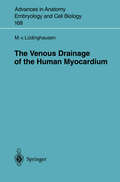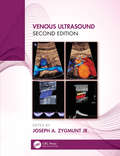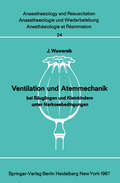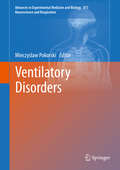- Table View
- List View
Venous Disease: Epidemiology, Management and Delivery of Care
by Charles Vaughan Ruckley FRCS EdVaricose veins are a very common problem. The precise aetiology of primary varicose veins remains unclear. It seems likely from the available evidence that inherited structural weakness combined with haemodynamic or microcirculatory abnormalities eventually lead to reduced vein wall elasticity, dilatation and the formation of varicosities. Increasing age, female gender, parity and occupation may all promote the development of varicose veins in susceptible individuals. Further clinical and experimental studies are necessary if the relative contribution of each of these factors is to be fully elucidated. References 1. Editorial. The treatment of varicose veins. Lancet 1975;ii:311. 2. Prerovsky I. Diseases of the veins. World Health Organisation, internal communication, MHO-PA 10964. 3. Weddell JM. Varicose veins: pilot study. Br J Surg 1969;23:179-186. 4. Hobsley M. Pathways in surgical management. 2nd ed. London: Edward Arnold, 1986. 5. Browse NL, Burnand KG, Lea Thomas M. Diseases of the veins. London: Edward Arnold, 1988. 6. Logan WPD, Brooke EM. The survey of sickness. Studies on medical and population subjects no. 12. London: General Register Office, 1957. 7. The committee on the Danish national morbidity survey. The sickness survey of Denmark. Copenhagen, 1960. 8. US Department of Health. Education and welfare: national health survey 1935-1936. Washington, DC, 1938. 9. The Department of National Health and Welfare and the Dominion Bureau of Statistics. Illness and health care in Canada. Canadian Sickness Survey 1950-1951. Ottawa, 1960.
Venous Disorders: Current Concepts
by Ajay K. Khanna Ravul JindalVenous disorders are extremely common in clinical practice, and recent years have seen a number of changes in the treatment of these conditions. This book covers the advances in our understanding and the management of venous disorders – both superficial and deep. It includes up-to-date reviews on the hemodynamics of venous circulation in the lower limbs, deep venous reflux, novel biomarkers in deep vein thrombosis, post thrombotic syndrome, infra-popliteal DVT, relevance of wave length in laser treatment of varicose veins, pelvic congestion syndrome, May-Thurner syndrome, nut cracker syndrome, endothermal heat-induced thrombosis, recurrent varicose veins, and venous trauma. It also discusses important topics such as one-stop vein clinics, alternatives for venous ulcer treatment, venous anatomy, therapeutic options in lymphedema, nerve damage during endovenous thermal ablation, newer oral anticoagulants, compression therapy for venous ulcer, sclerotherapy for varicose veins and thrombolysis for DVT. Written by leading experts in their field, this book is a key resource for practicing vein physicians and surgeons, and postgraduates in surgery training programs, enabling them to incorporate the latest advances into their day-to-day practice.
Venous Disorders of the Legs: Principles and Practice
by Lawrence L. TretbarWithin the last five years a number of new books on venous disorders have been produced. Previously the study of venous disease was well-served by the classic texts of Foote, Anning, Dodd and Cockett, and Hobbs, but these texts are now out of print and out of date. How does Larry Tretbar's book equate with its competition? Those of you who pick up or purchase this delightful little book will not be disappointed. It is a single author text which is clearly written and succinct. In just over 100 pages Tretbar distils the work of many of his larger competitors without losing any vital information along the way. He also provides new insights and ideas in many areas. Contents are set out in a standard format but the writing is pithy and the line drawings (mostly by the author himself) are clear and helpful. It excels in the management and treatment of varicose veins where the author has made his major contribution. The book contains many of the classic venous references though these of necessity cannot be comprehensive in the interest of brevity. Linton pointed out that diseases of the veins of the lower extremities are one of the commonest of human ailments that can be remedied by surgical measures. These disorders are often poorly managed by junior doctors who fail to acquaint themselves with the anatomy and pathophysiology of these disorders.
The Venous Drainage of the Human Myocardium (Advances in Anatomy, Embryology and Cell Biology #168)
by Michael LüdinghausenVenous Embolization of the Liver: Radiologic and Surgical Practice
by David C. C. Madoff, Masatoshi Makuuchi, Masato Nagino and Jean-Nicolas VautheyVenous Embolization of the Liver: Radiologic and Surgical Practice explores the theoretical advantages and clinical implications for utilizing Venous Embolization techniques, including portal vein and hepatic vein embolization. The practice of venous embolization of the liver was originally developed in Japan by Dr. Makuuchi (one of the co-editors of this book) in 1990 and since then, the techniques reviewed in this book are practiced throughout the world and are now considered the “standard of care” at many hepatobiliary centres worldwide. Venous Embolization of the Liver: Radiologic and Surgical Practice covers a multitude of topics, including: pertinent vascular (microscopic and macroscopic) and surgical anatomy, liver regeneration (including the atrophy-hypertrophy complex), historical perspectives of major hepatic resection, various hepatobiliary surgical procedures , factors affecting hypertrophy, pathophysiology of embolization and resection, embolization techniques (including approaches and embolic agents), the indications for embolization and resection (including pre-operative volumetric and functional assessment and post-embolization followup), potential complications, outcomes data for different diseases, recently advocated strategies (including “definitive” treatment of hepatocellular carcinoma using portal vein embolization after transcatheter arterial chemoembolization) and future perspectives. This book is a valuable resource for interventional radiologists and hepatobiliary surgeons who perform the embolization procedures and liver resections. Venous Embolization of the Liver: Radiologic and Surgical Practice can also be used secondarily by diagnostic radiologists, medical oncologists specializing in gastrointestinal malignancies, hepatologists, gastroenterologists, liver transplant surgeons and basic scientists interested in liver regeneration physiology research.
Venous Thromboembolism: Prevention and Treatment
by Kunio ShiratoPulmonary thromboembolism in Japan is currently associated with a high mortality rate and remains a concern for patients and medical staff alike. Moreover, as the mechanisms of the condition have been elucidated, it has become clear that much work needs to be done in the field to achieve acceptable results in this country. Thus, Japan has regularly played host to the International Symposium on Pulmonary Thromboembolism . At the most recent symposium, in Sendai, the epidemiology and the treatment of pulmonary thromboembolism, traveler's thrombosis, and the prevention of deep vein thromboembolism were discussed, particularly with reference to the differences between Japan and Western countries. The fruits of the collaboration between that assembly of international specialists can be found in this collection of work. It provides an in-depth look at the current concepts that guide the treatment and prevention of the disease, and at the problem areas that must be improved upon.
Venous Thromboembolism: A Nurse's Guide to Prevention and Management
by Ellen WelchWritten primarily with nurses in mind, this book provides a comprehensive overview of venous thromboembolism, a condition that rears its head regardless of specialty, killing thousands of people around the world in hospital beds and in the community alike. This book explains what it is, what symptoms to watch out for, how patients should be managed, and perhaps most importantly, how to prevent its development in those at risk. Based on the most up-to-date published guidelines on the subject, the book is pitched at a level appropriate for medical and nursing staff alike, covering basic pathophysiology and clinical management. A chapter is devoted to specific nursing interventions, giving practical tips alongside the theory. Case studies are used extensively, alongside tables, diagrams and text boxes, to illustrate important points. Although designed to be read as a whole, each chapter can be used as a reference to address specific queries, enabling health professionals to develop a greater understanding of the condition to provide optimal patient care.
Venous Thrombosis in Women: Pregnancy, the Contraceptive Pill and Hormone Replacement Therapy
by Ian A. GreerThe impact of hormones on deep venous thrombosis is one of the most charged and debated subjects in contraceptive medicine. Female hormonal balance is primarily affected by the use of either oral contraceptives or HRT. For a long time it has been recognized that oral contraceptives can raise the incidence of DVT; however, there has been an enormous controversy as to whether all progestins do this equally or whether some have a greater impact than others where oral contraception is concerned. Written by a world leader on the subject, this book offers the latest clinical information about the effects of pregnancy, the contraceptive pill, and hormone replacement therapy on thrombotic problems in women.
Venous Thrombosis in Women: Pregnancy, the Contraceptive Pill and Hormone Replacement Therapy
by Ian A. GreerThe impact of hormones on deep venous thrombosis is one of the most charged and debated subjects in contraceptive medicine. Female hormonal balance is primarily affected by the use of either oral contraceptives or HRT. For a long time it has been recognized that oral contraceptives can raise the incidence of DVT; however, there has been an enormous controversy as to whether all progestins do this equally or whether some have a greater impact than others where oral contraception is concerned. Written by a world leader on the subject, this book offers the latest clinical information about the effects of pregnancy, the contraceptive pill, and hormone replacement therapy on thrombotic problems in women.
Venous Ultrasound
by Joseph A. ZygmuntVenous Ultrasound 2e is the essential text for anyone involved in the treatment of chronic venous disease. It provides specific information on ultrasound as it is applied to chronic insufficiency, including history, general techniques, examples of anatomy, and protocols for performing ultrasound on patients, and discussions on key aspects of interpretation of sonographic findings. Updated to include the outcome and impact of three recent studies, the ATTRACT trial, the EVRA study, and the VIDIO imaging trial. An entire chapter is dedicated to iliac venous and stent imaging for those interested in expanding practice based on the mentioned studies. Also included is specific protocol for imaging of the pelvic area with focus on the pelvic congestion and reflux affecting this anatomic area. This text demonstrates that as imaging techniques improve, so too will the understanding of venous pathologies increase and the burdens of their respective pathologies. Pelvic Congestion, iliofemoral and late stage disease can be interrogated with a non-invasive approach using the techniques included prior to interventional procedures. This fully updated new edition includes coverage of new ablation techniques which include non- thermal and non- tumescent therapies for venous insufficiency – these have unique ultrasound properties on what to see, look for and observe in intra and post- operative situations. Focusing on the fundamentals that every phlebologist needs to know, the color illustrations and numerous line drawings complement the text for a complete learning experience. Key features: Covers anatomy related to venous insufficiency and obstruction Protocols with step by step approaches for those new to certain exams Includes useful diagrams and images to aid understanding Thoroughly up to date, with all the latest information for those practicing venous therapies Venous Ultrasound 2e is valuable for sonographers and physicians alike; including phlebologists, general and vascular surgeons, physicians, radiologists, angiologists, interventional cardiologist, mid-levels, and nurses who work in this area.
Venous Ultrasound
by Joseph A. Zygmunt Jr.Venous Ultrasound 2e is the essential text for anyone involved in the treatment of chronic venous disease. It provides specific information on ultrasound as it is applied to chronic insufficiency, including history, general techniques, examples of anatomy, and protocols for performing ultrasound on patients, and discussions on key aspects of interpretation of sonographic findings. Updated to include the outcome and impact of three recent studies, the ATTRACT trial, the EVRA study, and the VIDIO imaging trial. An entire chapter is dedicated to iliac venous and stent imaging for those interested in expanding practice based on the mentioned studies. Also included is specific protocol for imaging of the pelvic area with focus on the pelvic congestion and reflux affecting this anatomic area. This text demonstrates that as imaging techniques improve, so too will the understanding of venous pathologies increase and the burdens of their respective pathologies. Pelvic Congestion, iliofemoral and late stage disease can be interrogated with a non-invasive approach using the techniques included prior to interventional procedures. This fully updated new edition includes coverage of new ablation techniques which include non- thermal and non- tumescent therapies for venous insufficiency – these have unique ultrasound properties on what to see, look for and observe in intra and post- operative situations. Focusing on the fundamentals that every phlebologist needs to know, the color illustrations and numerous line drawings complement the text for a complete learning experience. Key features: Covers anatomy related to venous insufficiency and obstruction Protocols with step by step approaches for those new to certain exams Includes useful diagrams and images to aid understanding Thoroughly up to date, with all the latest information for those practicing venous therapies Venous Ultrasound 2e is valuable for sonographers and physicians alike; including phlebologists, general and vascular surgeons, physicians, radiologists, angiologists, interventional cardiologist, mid-levels, and nurses who work in this area.
Venous Valves: Morphology, Function, Radiology, Surgery
by R. Gottlob R. MayVenous valves rank among the smallest and most delicate organs of the human and animal bodies - so why devote an entire book to them? We were induced to do so by several reasons. First of all we would point out the clinical significance of venous valves. In the pathogenesis of a number of widespread diseases, such as varicose veins or the post-thrombotic syndrome, venous valves are involved as the underlying cause or at least a factor contributory to the symptoms. According to Taheri et al. these venous diseases occur ten times more frequently than arterial obliterations. Incompetence of venous valves also plays a causal role in varicocele, the most frequent cause of male infertility. But not only pathogenetic reasons induced us to write this book. In more recent times there has been a growing tendency to reconstruct functional valve disorders therapeutically; several surgical methods have been developed, which are critically reviewed in this book. It was our aim to sum up existing knowledge with respect to structure and function of venous valves and to expand that knowl edge by findings of our own. Examinations of semi-thin sections and unilayered en-face preparations have hardly been published so far, and systematic studies of the ultrastructure by electron-microscopy were not to be found in the literature. We are very grateful, therefore, to Dr. Silvana Geleff for having undertaken such a study upon our suggestion.
Ventilation und Atemmechanik bei Säuglingen und Kleinkindern unter Narkosebedingungen (Anaesthesiologie und Intensivmedizin Anaesthesiology and Intensive Care Medicine #24)
by J. WawersikVentilator-Associated Pneumonia (Perspectives on Critical Care Infectious Diseases #4)
by Richard G. Wunderink and Jordi RelloVentilator-associated pneumonia (VAP) continues to be one of the greatest challenges to critical care practitioners and one of the greatest threats to the survival of our patients. The choice of this topic for an issue of the PERSPECTIVES IN CRITICAL CARE INFECTIOUS DISEASES Series is therefore quite appropriate. Despite its importance, many areas of the management of ventilator-associated pneumonia remain controversial. We therefore are pleased to include contributions from experts and investigators offering different perspectives on some of these controversial areas.
Ventilator-Induced Lung Injury
by Didier Dreyfuss Georges Saumon Rolf HubmayrThis reference surveys current best practices in the prevention and management of ventilator-induced lung injury (VILI) and spans the many pathways and mechanisms of VILI including cell injury and repair, the modulation of alveolar-capillary barrier properties, and lung and systemic inflammatory consequences of injurous mechanical ventilation. Cons
The Ventilator Project
by Srikant Sastri Amitabha BandyopadhyayA raging pandemic, a dearth of life-saving equipment, and ninety days to manufacture a world-class ventilator.On 24 March 2020, a nationwide lockdown was imposed in India in the face of a formidable adversary, the Covid-19 pandemic. With the number of cases increasing exponentially, hospitals were faced with a dangerous shortage of life-saving equipment and personnel.In response to the imminent crisis, Amitabha Bandyopadhyay and Srikant Sastri formed the IIT Kanpur ventilator Consortium as a task force to assist a young startup, Nocca Robotics, in building affordable high-quality ventilators for India’s cash-strapped hospitals. Under the mentorship of reputed industry leaders, the task force and the Nocca team worked tirelessly against unprecedented odds – trammelled by a ban on imports and telecommuting through Zoom and Whatsapp in the face of stringent lockdown restrictions – to manufacture the Noccarc V310 in record time. This is the incredible story of its conception, creation and success, in the words of the task force co-leaders themselves.Inspiring and riveting, The Ventilator Project also offers an unmatched blueprint for business in the post-Covid era through first-hand lessons gleaned during the task force’s phenomenal ninety-day run. It proves that India, with its deep recesses of talent and ingenuity, has the potential to be a world leader in both business and social impact.
Ventilatory Disorders (Advances in Experimental Medicine and Biology #873)
by Mieczyslaw PokorskiRespiratory function is a major determinant of the overall quality of health and well-being of an individual. This book runs the gamut of chapters devoted to chronic cough-related conditions in children and adults, health care quality and safety, environmental pollution health effects, efficiency of therapeutic approaches and a mutual dependence of respiratory and non-respiratory illnesses. An integrated approach to the investigation and treatment of sleep disordered breathing as well as the use of new and more efficient diagnostic strategies for pleural tuberculosis are presented. Chapters focus on translating science into practice, with an eye on presymptomatic identification of serious ailments for which there could be more effective therapy, leading to improved general health outcomes. This book includes chapters about disorders which will be of interest to clinicians, family practitioners and medical researchers.
Ventilatory Failure (Update in Intensive Care and Emergency Medicine #15)
by J. J. Marini C. RoussosThis book reviews the most recent developments in the patho- physiology and therapy of ventilatory failure. It contains contributions by twenty-five internationally recognized aut- horities on respiratory muscle function and investigators actively contributing to our knowledge of the cause, diagno- sis and therapy of ventilatory failure. Of particular inter- estare the descriptions of new modalities of partial and complete ventilatory assistance as well as new knowledge re- garding ventilatory control and fatigue during stressful breathing. The reader will find here a state-of-the-art re- view of the latest research and practical applications in this most critical area of intensive care medicine.
Ventilatory Support and Oxygen Therapy in Elder, Palliative and End-of-Life Care Patients
by Antonio M. Esquinas Nicola VargasThis book provides readers with a comprehensive and up-to-date guide to non-invasive mechanical ventilation in palliative medicine, focusing on why and when it may be necessary. Physicians will find a practical guide to this specific context, particularly focused on pulmonary function and physiology in the elderly, and on ventilatory management in surgery and chronic stable conditions. The book provides detailed information on the rationale for invasive and non-invasive ventilation, the different modes of ventilation, indications and contraindications, prognostic factors, and outcomes. It addresses in detail the role of postoperative mechanical ventilation following various forms of surgery, and discusses key aspects of withdrawal from ventilatory support. Attention is also devoted to the use of mechanical ventilation within and beyond the ICU. The concluding part of the book focuses on important topics such as ethics, legal issues, home mechanical ventilation, drug therapy, rehabilitation and end-of-life.Its multidisciplinary approach, bringing together contributions from international experts in different specialties, ensures that the book will be of interest to a broad range of health professionals involved in the management of older patients admitted to the ICU, including intensivists, anesthesiologists, and geriatricians.
Ventilatory Support for Chronic Respiratory Failure
by Nicolino Ambrosino Roger S. GoldsteinAs our population continues to grow, more and more patients are becoming dependent on long-term ventilatory support. Therefore, the need for quality options such as home mechanical ventilation is fast becoming a necessity. Ventilatory Support For Chronic Respiratory Failure (CRF) is the first resource to authoritatively address the needs of the acu
Ventilazione meccanica non invasiva: Come, quando e perché
by Stefano Nava Francesco FanfullaLa crescita esponenziale dell’interesse per la ventilazione non invasiva (NIV) verificatasi negli ultimi 10-15 anni, non solo dal punto di vista clinico e applicativo, ma anche speculativo, ha pochi eguali nella recente storia della medicina.In Italia e in Europa in generale tale metodica è applicata su larga scala, prevalentemente nei reparti di Pneumologia e nelle Unità di Cure Intermedie Respiratorie, mentre per quanto riguarda la sua applicazione nei reparti di Terapia Intensiva Generale (UTI) i dati emersi da uno studio multicentrico condotto nei paesi francofoni vedono la NIV impiegata in una quantità di casi che rappresenta fino al 50% dei pazienti che richiedono assistenza ventilatoria.Il recente studio EUROVENT ha inoltre dimostrato come la NIV non si limiti alla sua applicazione “acuta”, dal momento che circa 25.000 pazienti sono attualmente ventilati “in cronico” a domicilio. Inoltre, si calcola che milioni di cittadini europei soffrano attualmente di disturbi respiratori durante il sonno, e per molti di essi il trattamento medico di prima scelta è rappresentato dalla NIV. Questo libro si propone lo scopo di richiamare l’attenzione sulle più recenti acquisizioni in questo campo, con la speranza di fornire uno strumento valido e maneggevole per la scelta e l’impostazione della migliore modalità di ventilazione.
Ventricular Arrhythmias and Sudden Cardiac Death: Mechanism, Ablation, and Defibrillation
by Paul J. Wang Henry H. Hsia Amin Al-Ahmad Paul C. ZeiVentricular arrhythmias and sudden death are responsible for hundreds of thousands of deaths each year throughout the world. Covering the most recent developments in this field, this leading text serves as a guide to this area of increasing clinical importance, addressing a wide range of topics, including: basic mechanisms of ventricular tachycardia and ventricular fibrillation clinical syndromes and etiologies epidemiology and risk stratification pharmacologic therapy ablation and surgery implantable defibrillators Ventricular Arrhythmias and Sudden Cardiac Death provides the information that cardiologists, cardiac electrophysiologists, cardiac electrophysiology fellows, scientists, industry, and associated professionals need to know about current and evolving Ventricular Tachyarrhythmia treatment and diagnosis. As the most comprehensive book on this topic, it will serve as the text that this readership will turn to first.
Ventricular-Assist Devices and Kidney Disease: Clinical Perspectives
by Chaitanya Desai William G. Cotts Edgar V. Lerma Michael R. RudnickThis text serves as a convenient one-stop resource on the pathogenesis, diagnosis and treatment of kidney diseases in context of advanced heart failure and presence of ventricular assist devices. Advances in managing heart failure, evidence-based practices and therapies are covered, along with the management of this unique and complex subset of patients. The book also provides insights into combined heart and kidney transplantation. Authored by leaders in nephrology, cardiology and transplantation, this book fills a critical knowledge gap in understanding and treating patients with acute or chronic dysfunction of the heart and kidneys and how one induces dysfunction in the other organ.
Ventricular Assist Devices in Advanced-Stage Heart Failure
by Shunei KyoThis book focuses on how ventricular assist devices (VADs) can help provide destination therapy for patients with terminal heart failure, one of the most serious diseases in the world today because of the tremendous number of patients, the high mortality rate, and the cost of care. One means of providing cardiological support for patients suffering from heart failure is with VADs, and more than 10,000 patients worldwide have now been implanted with these devices. Half of them already have lived more than one year, and 2,000 patients more than two years, after surgery. This improved survival means that we have reached a point where VADs can be used for destination therapy, not just for bridge-to-recovery or bridge-to-transplant. In view of the increasing number of patients with advanced-stage heart failure and the availability and longevity of transplanted hearts, VADs can solve many problems. In addition to providing information about the devices themselves, this book includes vital guidelines on long-term management and support of VAD-implanted patients’ everyday lives.






















